“`html
Understanding the Language of the Market: A Deep Dive into Technical Analysis
Welcome to this journey into the fascinating world of technical analysis. As you step into the trading arena, whether you’re a complete newcomer or looking to refine your existing skills, understanding how to read market movements is paramount. Think of it like learning a new language – the language spoken by price charts and trading volume. It might look intimidating at first, with all the lines, bars, and indicators, but just like any language, it follows rules and patterns that, once learned, can unlock deep insights.
We are here to help you decipher this market language. Our goal is not just to teach you definitions but to equip you with the practical understanding and theoretical foundation needed to approach the market with confidence. Technical analysis isn’t a crystal ball, but it is a powerful toolkit used by traders globally to identify potential opportunities and manage risk.
Ready to begin exploring the charts?
What Exactly is Technical Analysis?
At its core, technical analysis is a trading discipline employed to evaluate investments and identify trading opportunities by analyzing statistical trends gathered from trading activity, such as price movement and volume. Unlike fundamental analysis, which looks at the intrinsic value of an asset based on economic, financial, and other qualitative and quantitative factors (like a company’s earnings, industry health, or geopolitical events), technical analysis focuses solely on market action.
Imagine trying to predict the weather. Fundamental analysis would involve studying satellite images, atmospheric pressure systems, and jet streams. Technical analysis, on the other hand, is more like looking at historical weather patterns for a specific date and location to make an educated guess about today’s weather. It assumes that all relevant information about an asset is already reflected in its price.
This discipline is built on a few key tenets. Firstly, market prices discount everything. This means the price already reflects all publicly available information, sentiment, and even speculation. Secondly, prices move in trends. Once a trend is established, it’s more likely to continue than to reverse immediately. Thirdly, history tends to repeat itself. Chart patterns and market behavior seen in the past are likely to appear again in the future, often driven by consistent human psychology and market dynamics.
By studying historical price data, trading volume, and other market statistics, technical analysts attempt to forecast future price movements. They look for patterns and signals that suggest potential shifts in supply and demand, aiming to make informed decisions about when to buy or sell.
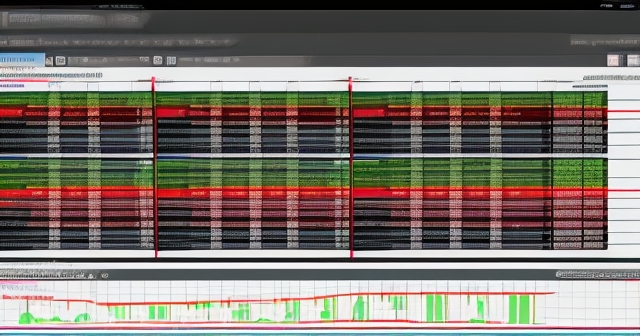
The Philosophical Underpinnings: Why Does it Work?
Understanding the philosophy behind technical analysis helps us appreciate its utility and limitations. The core assumption is that market psychology plays a significant role in price movements. Fear, greed, euphoria, and panic are powerful emotions that influence trader behavior, and these emotions often manifest in predictable patterns on price charts.
Consider a herd mentality. When a stock price starts rising rapidly, FOMO (Fear Of Missing Out) can kick in, causing more people to buy, pushing the price even higher. Conversely, a sharp decline can trigger panic selling, accelerating the fall. Technical analysis posits that these collective psychological forces create recurring patterns and trends that can be identified and potentially exploited.
Another fundamental principle is the concept of efficiency, particularly as described by the Efficient Market Hypothesis (EMH), though technical analysis operates somewhat in contrast to the strong form of EMH. While strong-form EMH suggests prices reflect all public and private information, technical analysis leans closer to the idea that markets are not perfectly efficient in the short to medium term. Price movements might overshoot or undershoot fundamental values due to psychological factors, creating opportunities that technical analysis aims to capture.
Moreover, the principle of “history repeats itself” isn’t about absolute prediction but about probabilities. Recurring chart patterns, such as head and shoulders or double tops, are believed to represent typical outcomes of the battle between buyers and sellers. By recognizing these patterns, traders can assess the likelihood of a particular price move occurring based on how similar situations resolved in the past.
So, technical analysis isn’t just drawing lines on a chart; it’s an attempt to understand the collective behavior of market participants and leverage the statistical probabilities derived from historical price action and volume.
The Raw Data: Price, Volume, and Time
Before we delve into charts and patterns, let’s understand the fundamental data points that technical analysts work with. Every trading decision boils down to interactions between buyers and sellers, and these interactions are captured by three key pieces of information: price, volume, and time.
Price is arguably the most important. For any given period (a minute, an hour, a day, a week), there are typically four price points that matter:
- Open Price: The first price at which an asset traded during the period.
- High Price: The highest price reached during the period.
- Low Price: The lowest price reached during the period.
- Close Price: The last price at which an asset traded during the period. For many analysts, the closing price is the most significant as it represents the final consensus between buyers and sellers for that specific timeframe.
Volume refers to the total number of shares, contracts, or units of an asset that were traded during a specific period. Volume is crucial because it indicates the intensity or conviction behind a price move. A large price increase on high volume suggests strong buying pressure and potential continuation, while a large price increase on low volume might be less significant, perhaps indicating a lack of broad participation.
Think of price as the direction the car is going, and volume as the engine’s horsepower. A weak engine won’t push the car very far, even if the steering is set straight. Similarly, price movements need volume to be considered robust and potentially sustainable.
Time defines the period over which price and volume data are aggregated. Technical analysis can be applied across various timeframes, from ultra-short periods like 1-minute charts (used by high-frequency traders) to long-term weekly or monthly charts (used for strategic positioning). Your chosen timeframe will heavily influence the patterns and signals you look for and the trading strategy you employ. A trend that looks strong on a daily chart might appear as just noise on a 15-minute chart, and vice-versa.
Mastering how to read these three data points together is the foundation of all technical analysis.
| Price Points | Description |
|---|---|
| Open Price | The first price at which an asset traded during the period. |
| High Price | The highest price reached during the period. |
| Low Price | The lowest price reached during the period. |
| Close Price | The last price at which an asset traded during the period. |
Visualizing the Market: Types of Charts
The raw price, volume, and time data are practically useless in their raw form. Technical analysts visualize this data using various types of charts, each offering a different perspective on market activity. The most common chart types are line charts, bar charts, and candlestick charts.
A Line Chart is the simplest form. It typically connects the closing prices over a specific period. While easy to read and useful for identifying trends at a glance, it provides limited detail as it only shows the closing price, ignoring the open, high, and low for each period.
A Bar Chart provides more information. For each period, it shows the open, high, low, and close prices. A vertical line represents the high-to-low range, a small horizontal dash on the left shows the open price, and a small horizontal dash on the right shows the close price. This allows you to see the range of price movement within a period and the relationship between the opening and closing prices.
The most popular chart type, especially in Western markets, is the Candlestick Chart. Originating in Japan centuries ago for rice trading, candlesticks offer a rich visual representation of price action. Like bar charts, each “candle” represents a specific time period and shows the open, high, low, and close prices. However, they do so in a more visually intuitive way.
A candlestick has a “body” and “wicks” or “shadows”. The body represents the range between the open and close prices. If the close is higher than the open, the body is typically colored green or white (a bullish candle). If the close is lower than the open, the body is colored red or black (a bearish candle). The wicks extend above and below the body, representing the high and low prices reached during the period.
Candlestick charts are favored because the size and color of the body, along with the length of the wicks, can quickly communicate information about market sentiment and potential turning points. For example, a long green body with short wicks indicates strong buying pressure throughout the period.
Understanding how to read these charts is your first step in decoding market behavior. As you become more familiar, you’ll start to see patterns emerge naturally.
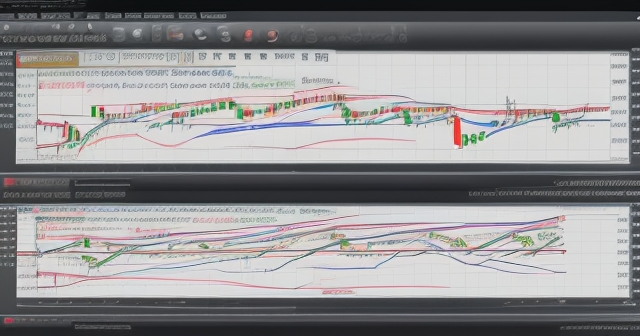
Deciphering Candlestick Patterns: Basic Signals
Candlestick charts are powerful because individual candles and combinations of candles often form specific patterns that technical analysts believe can signal potential reversals or continuations of price trends. While there are dozens, even hundreds, of identified patterns, let’s look at a few fundamental ones to get you started.
Single candlestick patterns:
- Doji: A Doji forms when the open and close prices are very close or identical. The body is tiny, resembling a cross, inverted cross, or plus sign. Dojis indicate indecision in the market – buyers and sellers are in balance. After a strong trend, a Doji can sometimes signal a potential reversal as momentum is pausing.
- Marubozu: This is a candle with a long body and virtually no wicks. A green/white Marubozu shows strong buying pressure from open to close, indicating bulls were in control. A red/black Marubozu indicates strong selling pressure from open to close, with bears in control. These suggest strong trend continuation potential.
- Hammer & Hanging Man: These have a small body near the top (bullish) or bottom (bearish) of the trading range and a long lower wick (shadow), at least twice the length of the body, and little to no upper wick. A Hammer occurring after a downtrend is considered a bullish reversal signal. A Hanging Man occurring after an uptrend is considered a bearish reversal signal. They indicate that the price fell significantly during the period but was pushed back up by opposing pressure.
- Inverted Hammer & Shooting Star: These have a small body near the bottom (bullish) or top (bearish) of the trading range and a long upper wick, at least twice the length of the body, and little to no lower wick. An Inverted Hammer after a downtrend is a bullish reversal signal. A Shooting Star after an uptrend is a bearish reversal signal. They indicate that the price rose significantly but was pushed back down.
Multi-candlestick patterns:
- Engulfing Patterns: A two-candle pattern where the second candle’s body completely “engulfs” the first candle’s body. A Bullish Engulfing pattern occurs in a downtrend where a small bearish candle is followed by a large bullish candle whose body covers the previous one. A Bearish Engulfing pattern occurs in an uptrend where a small bullish candle is followed by a large bearish candle whose body covers the previous one. These are considered strong reversal signals, indicating a significant shift in momentum.
- Morning Star & Evening Star: Three-candle reversal patterns. A Morning Star is a bullish pattern after a downtrend, consisting of a long bearish candle, a small-bodied candle (often a Doji or spinning top) that gaps down, and a long bullish candle that closes well into the first bearish candle’s body. An Evening Star is a bearish pattern after an uptrend, consisting of a long bullish candle, a small-bodied candle that gaps up, and a long bearish candle that closes well into the first bullish candle’s body. These represent a transition from selling/buying dominance to indecision, followed by a reversal of direction.
Remember, no pattern is foolproof. Confirmation from subsequent price action or other indicators is often needed. These patterns are tools to help you identify potential turning points, not guarantees.
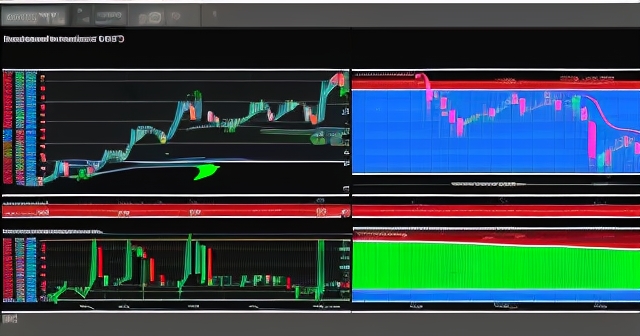
Identifying Key Areas: Support and Resistance
Among the most fundamental concepts in technical analysis are Support and Resistance levels. These are price levels on a chart where the price has previously struggled to move beyond, either failing to fall lower (support) or failing to rise higher (resistance).
Support is a price level where buying interest is strong enough to overcome selling pressure, potentially preventing the price from falling further. Think of it as a “floor” for the price. When the price approaches a support level, traders who missed buying lower might step in, while those who sold short might cover their positions, both contributing to buying pressure. Historically, a price bottom occurring at a certain level suggests that level may act as support again in the future.
Resistance is the opposite – a price level where selling pressure is strong enough to overcome buying pressure, potentially preventing the price from rising further. Think of it as a “ceiling”. When the price approaches a resistance level, traders who bought lower might take profits, while those who want to sell short might initiate positions, both contributing to selling pressure. Historically, a price peak occurring at a certain level suggests that level may act as resistance again.
These levels aren’t precise lines drawn in the sand; they are often better thought of as zones. The more times a price level has acted as support or resistance, and the more significant the price action at that level (e.g., high volume reversals), the stronger that level is considered.
What happens when support or resistance is broken? A crucial principle is that broken support often becomes resistance, and broken resistance often becomes support. When the price breaks decisively below a support level, that level may now act as a ceiling for any future price rallies. Similarly, if the price breaks decisively above a resistance level, that level may act as a floor during subsequent price pullbacks.
Why does this occur? Psychology plays a role. Traders who bought at or near the old support (now broken) and are now holding losses might look to sell when the price rallies back to their entry point (the old support, now resistance) to minimize losses. Conversely, traders who sold short at or near the old resistance (now broken) might look to cover their positions (buy) when the price dips back to their entry point (the old resistance, now support), while traders who missed the breakout above resistance might see a pullback to that level as a second chance to buy.
Identifying and trading around support and resistance levels is a fundamental strategy for many traders, offering potential entry points, exit points (take profit), and levels for setting stop-losses.
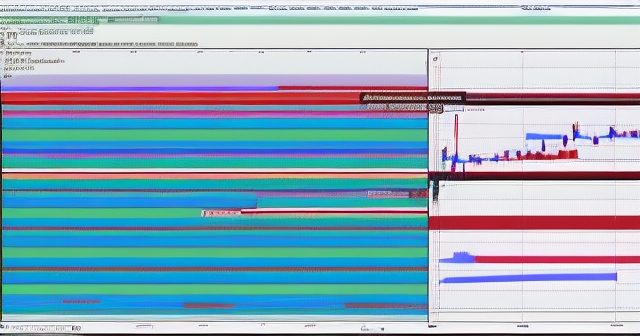
Charting the Direction: Trend Lines and Channels
Markets rarely move in a straight line; they tend to trend. A trend is the general direction in which the price of an asset is moving over a specific period. Technical analysts identify three main types of trends: an uptrend (higher highs and higher lows), a downtrend (lower highs and lower lows), and a sideways or range-bound trend (prices trading within a relatively defined horizontal band of support and resistance).
Trend lines are graphical representations of these trends, drawn directly on the price chart. An uptrend line is drawn by connecting at least two significant consecutive low points (higher lows) and extending the line into the future. This line acts as a dynamic support level, suggesting that if the price pulls back to this line, buying pressure might resume.
A downtrend line is drawn by connecting at least two significant consecutive high points (lower highs) and extending the line into the future. This line acts as a dynamic resistance level, suggesting that if the price rallies to this line, selling pressure might resume.
The more times a trend line is tested (touched by the price) and holds, the stronger the trend and the trend line are considered. A break of a significant trend line can signal a potential change in the direction of the trend.
Channels are formed by drawing a line parallel to the trend line, either above an uptrend line (connecting higher highs) or below a downtrend line (connecting lower lows). This creates a “channel” within which the price tends to trade. In an uptrend channel, the upper line acts as resistance and the lower line as support. In a downtrend channel, the upper line acts as resistance and the lower line as support.
Trading within channels involves buying near the lower trend line in an uptrend (expecting a bounce) or selling near the upper trend line in a downtrend (expecting a pullback). A break out of the channel, either above the upper line in an uptrend or below the lower line in a downtrend, can signal an acceleration of the trend. Conversely, a break below the lower line in an uptrend or above the upper line in a downtrend can signal a potential trend reversal.
Identifying trends and drawing accurate trend lines and channels requires practice and judgment, but they are invaluable tools for visualizing the market’s direction and identifying potential trading opportunities within that direction.
| Trend Types | Description |
|---|---|
| Uptrend | A trend with higher highs and higher lows. |
| Downtrend | A trend with lower highs and lower lows. |
| Sideways Trend | Price trades within a defined horizontal band of support and resistance. |
Leveraging Moving Averages: Smoothing Out the Noise
Raw price data can be noisy and volatile, making it difficult to discern the underlying trend. Moving Averages (MAs) are among the most popular and fundamental technical indicators used to smooth out price data over a specific period, creating a single flowing line that makes the trend easier to see.
A moving average is simply the average price of an asset over a specified number of past periods (e.g., 50 days, 200 days, 14 periods for an hourly chart). As each new period closes, the oldest data point is dropped, and the newest is added, causing the average to “move” over time.
There are several types of moving averages, but the most common are the Simple Moving Average (SMA) and the Exponential Moving Average (EMA).
The SMA calculates the simple average of the price data points over the defined period. For example, a 50-day SMA adds up the closing prices of the last 50 days and divides by 50. It gives equal weight to each price point in the period.
The EMA is a type of moving average that gives more weight to recent price data, making it more responsive to new information than the SMA. Because it reacts faster to price changes, some traders prefer EMAs for identifying trend changes earlier, although they can also be more prone to false signals in choppy markets.
Moving averages are used in several ways:
- Identifying the Trend: A rising MA indicates an uptrend, a falling MA indicates a downtrend, and a flat MA suggests a sideways market. Longer-period MAs (like the 200-day MA) are used to identify long-term trends, while shorter-period MAs (like the 20-day MA) are used for shorter trends.
- Dynamic Support and Resistance: MAs can act as dynamic support (in an uptrend) or resistance (in a downtrend) levels. Prices often bounce off or stall at significant MAs.
- Crossover Signals: One of the most common trading signals involves the crossover of two different moving averages. A bullish signal (potential buy) occurs when a shorter-period MA crosses above a longer-period MA (e.g., the 50-day MA crossing above the 200-day MA, known as a “Golden Cross”). A bearish signal (potential sell) occurs when a shorter-period MA crosses below a longer-period MA (e.g., the 50-day MA crossing below the 200-day MA, known as a “Death Cross”). These crossovers are interpreted as signals that the shorter-term momentum is shifting relative to the longer-term trend.
While simple, moving averages are powerful foundational tools for understanding trend direction and momentum. Experimenting with different periods and types of MAs is key to finding what works best for your chosen asset and trading style.
Expanding Your Toolkit: Introduction to Technical Indicators
Beyond price charts and moving averages, technical analysis offers a vast array of technical indicators – mathematical calculations based on price, volume, or a combination of both, designed to help traders identify potential trading signals, confirm trends, or anticipate reversals.
Indicators are typically displayed in separate panels above or below the price chart. They generally fall into categories:
- Trend-Following Indicators: These help confirm the direction and strength of a trend. Examples include Moving Averages (already discussed), MACD (Moving Average Convergence Divergence), and the Average Directional Index (ADX). They tend to work well in trending markets but can produce false signals in sideways markets.
- Momentum Indicators: These measure the speed and strength of price movements. They are often used to identify overbought or oversold conditions, potentially signaling a trend reversal. Examples include the Relative Strength Index (RSI), Stochastic Oscillator, and Rate of Change (ROC). Momentum indicators can be particularly useful in range-bound markets or to spot potential divergence from price.
- Volatility Indicators: These measure the degree of price fluctuation. High volatility means prices are changing rapidly, while low volatility means prices are relatively stable. Examples include Bollinger Bands and Average True Range (ATR). Volatility indicators can help traders gauge risk and set appropriate stop-loss levels.
- Volume Indicators: These analyze trading volume to confirm trends or spot divergences. Examples include On-Balance Volume (OBV) and the Accumulation/Distribution Line.
Let’s briefly touch upon two very popular indicators:
The Relative Strength Index (RSI) is a momentum oscillator that measures the speed and change of price movements. It oscillates between 0 and 100. Traditionally, readings above 70 indicate that an asset is overbought (potentially due for a pullback or reversal), while readings below 30 indicate that it is oversold (potentially due for a bounce or reversal). RSI can also be used to identify divergence – when the price makes a new high but the RSI makes a lower high, it can signal weakening momentum and a potential bearish reversal.
The Moving Average Convergence Divergence (MACD) is a trend-following momentum indicator that shows the relationship between two moving averages of a security’s price. It is calculated by subtracting the 26-period EMA from the 12-period EMA (the MACD line). A 9-period EMA of the MACD line is then plotted on top of the MACD line and acts as a signal line. Traders look for signal line crossovers, centerline crossovers (MACD line crossing zero), and divergence to generate signals.
Choosing which indicators to use depends on your trading style, the asset you’re trading, and the market conditions. It’s crucial not to use too many indicators at once, as this can lead to conflicting signals and analysis paralysis. Focus on understanding a few key indicators and how they complement each other.
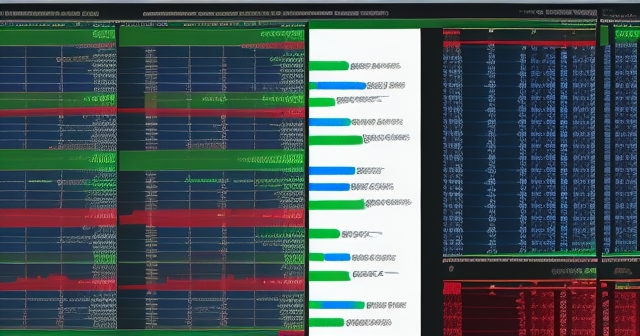
Building Your Strategy: Applying Technical Analysis
Technical analysis is not just about identifying patterns or indicators; it’s about using these tools to build a coherent trading strategy. A trading strategy is a plan that outlines specific rules for entering trades, managing trades, and exiting trades. Technical analysis provides the framework for defining these rules based on market data.
Applying technical analysis involves several steps:
- Identify the Market and Timeframe: What asset are you trading (stocks, forex, commodities, crypto)? What is your preferred trading horizon (scalping, day trading, swing trading, long-term investing)? This determines the type of chart you’ll primarily use and the sensitivity of your analysis.
- Identify the Trend: Is the market in an uptrend, downtrend, or range? Use trend lines, channels, and long-term moving averages to determine the prevailing direction. “The trend is your friend” is a common saying for a reason – trading with the trend generally increases your probability of success.
- Identify Key Levels: Locate significant support and resistance zones using historical price action. These levels are crucial for determining potential entry points, stop-loss placements, and profit targets.
- Look for Signals: Use candlestick patterns and technical indicators (like MACD, RSI, moving average crossovers) to identify specific buy or sell signals that align with the trend and key levels. For example, in an uptrend, you might look for bullish engulfing patterns occurring at a support level or a moving average bounce confirmed by bullish divergence on the RSI.
- Plan Your Trade: Before entering a trade, define your entry price, your stop-loss price (where you will exit the trade to limit losses if it moves against you), and your target price (where you plan to take profits). This is crucial for risk management. Technical analysis helps you identify logical places for these levels based on chart structure (e.g., placing a stop-loss just below a support level).
- Execute and Manage: Enter the trade according to your plan. Once in the trade, monitor the price action and be prepared to adjust your stop-loss (e.g., trailing stop) or exit if your plan dictates or if new signals emerge.
- Review and Learn: After the trade is closed (win or lose), review what happened. Did your analysis work? Were your signals valid? What could you have done differently? This iterative process is vital for improving your trading skills.
Remember that no single indicator or pattern is sufficient on its own. Effective strategies often involve combining multiple technical tools to confirm signals and build conviction. For example, you might wait for a bullish candlestick pattern at a support level that coincides with the price bouncing off a key moving average, while also checking if a momentum indicator like RSI is showing bullish divergence. This confluence of factors can strengthen the trading signal.
Risk Management and Position Sizing
Even with the most sophisticated technical analysis, losses are an inevitable part of trading. This is where risk management becomes paramount – it’s arguably more important for long-term success than identifying winning trades. Technical analysis plays a crucial role in setting up effective risk management.
The primary risk management tool derived from technical analysis is the stop-loss order. A stop-loss is an instruction to automatically close a trade if the price moves against you to a specified level. Technical analysis helps you determine the logical placement of a stop-loss. For example, if you buy an asset because it bounced off a support level, placing your stop-loss just below that support level makes sense. If the price breaks below that support, your initial analysis (that support would hold) is invalidated, and it’s time to exit the trade to prevent larger losses.
Position sizing is the process of determining how many shares, contracts, or units of an asset you will trade. This is directly linked to your risk tolerance and the stop-loss level. A common risk management rule is the 1% or 2% rule, which states that you should risk no more than 1% or 2% of your total trading capital on any single trade. If your capital is $10,000, you should risk no more than $100-$200 per trade.
Technical analysis helps calculate the risk per trade. If you determine your entry is $100 and your stop-loss is $98, your risk per share is $2. If you want to risk $200 total, you can trade up to 100 shares ($200 / $2 risk per share). If the risk per share is larger (wider stop-loss), you will trade fewer shares to maintain the same dollar risk.
This approach ensures that even if you have a series of losing trades, no single loss will wipe out a significant portion of your capital. It allows you to survive losing streaks and remain in the game for when your analysis aligns with market movements.
Technical analysis helps you define the trade setup (entry, stop-loss, target), and risk management dictates how much capital you allocate to that setup. Combining robust technical analysis with disciplined risk management is the hallmark of professional trading.
The Limitations and Criticisms of Technical Analysis
While a powerful tool, technical analysis is not without its limitations and critics. Understanding these helps maintain a balanced perspective and manage expectations.
One common criticism is that technical analysis is a form of self-fulfilling prophecy. If enough traders use the same patterns or indicators (like support/resistance levels or moving average crossovers), their collective actions based on those signals can actually cause the predicted price movement to occur. While this might sound like a reason it *works*, it also means the signals are influenced by market psychology and widespread adoption rather than purely objective factors.
Another limitation is the potential for false signals. In choppy, sideways, or highly volatile markets, trend lines can be broken and re-established quickly, indicators can give conflicting or whipsaw signals, and patterns may fail to develop as expected. This can lead to multiple losing trades.
Technical analysis focuses on *what is happening* with the price, but not *why* it is happening. It largely ignores fundamental news, economic reports, and qualitative factors that can significantly impact an asset’s value and price direction. A major news event can instantly invalidate the most perfect-looking technical pattern.
Furthermore, technical analysis is inherently subjective. Different traders might draw trend lines slightly differently, use different periods for their moving averages, or interpret complex patterns in varying ways. What one trader sees as a clear buy signal, another might dismiss as noise.
The argument about whether technical analysis truly has predictive power beyond random chance is also ongoing, particularly from proponents of strict Efficient Market Hypotheses. They argue that any patterns are simply random fluctuations in a market where prices already reflect all information.
Despite these criticisms, the widespread use of technical analysis by individual traders, large institutions, and hedge funds suggests its practical utility in providing a framework for analyzing market structure, identifying potential trade setups, and managing risk. The key is to use it as a probability assessment tool, not a guaranteed prediction method, and to be aware of its limitations, especially in the face of significant fundamental shifts.
Integrating Fundamental Analysis: A Holistic Approach
While technical analysis and fundamental analysis are distinct disciplines, many successful traders and investors advocate for combining elements of both. This integrated approach, sometimes called confluence trading or simply using a multi-factor analysis, can potentially provide a more robust view of the market.
Technical analysis tells you *when* to potentially enter or exit a trade based on price action and patterns. Fundamental analysis tells you *what* might be driving the long-term value and direction of an asset.
For instance, a fundamental analyst might identify a stock that is undervalued based on its earnings, growth prospects, and industry trends. However, they might not know the optimal time to buy. A technical analyst using this information could then examine the stock’s price chart, looking for technical signals that indicate buying pressure is increasing or that the stock is breaking above a significant resistance level, suggesting the fundamental value is starting to be recognized by the market.
Conversely, a technical analyst might spot a strong uptrend in a currency pair. Before jumping in, they might check major economic releases scheduled for those countries to ensure there isn’t a fundamental event on the horizon that could drastically alter the trend. Or they might use technical analysis to time entries and exits for long-term positions identified by fundamental analysis.
Using both approaches can provide a more comprehensive perspective. Fundamental analysis helps identify potentially strong or weak assets based on their intrinsic merit and macroeconomic context, while technical analysis helps time entry and exit points, manage risk with stop-losses, and identify the market’s current sentiment reflected in price action.
This doesn’t mean you need to become an expert in both. Many traders focus primarily on one discipline but keep an eye on the other for confirmation or to avoid trading against significant opposing forces. For example, a technical trader trading a company’s stock would be wise to know when its earnings reports are due, as these are fundamental events that frequently cause significant price volatility that can override technical patterns.
For those applying technical analysis across various markets, including the dynamic foreign exchange (forex) market, selecting a platform that supports your analytical needs is crucial. If you are seeking a regulated broker for global trading, Moneta Markets is licensed by regulators such as FSCA, ASIC, and FSA. They offer segregated client funds, free VPS, and 24/7 Chinese customer service, making them a strong choice for many traders.
Ultimately, the blend of technical and fundamental analysis you use will depend on your personal trading style, goals, and the specific markets you trade. But acknowledging the insights offered by both can lead to more informed and potentially more successful trading decisions.
Conclusion: Your Journey with Technical Analysis
We have covered a significant amount of ground on our deep dive into technical analysis. From understanding its core philosophy and the basic market data it utilizes, to exploring different chart types, candlestick patterns, key levels like support and resistance, trend lines, moving averages, and a glimpse into the world of technical indicators, you now have a solid foundation.
Remember that technical analysis is a skill that is honed through practice and experience. Start by focusing on one or two chart types and a few key indicators. Apply what you’ve learned to historical charts to see how patterns and signals played out. Paper trading (using virtual money) is an excellent way to practice applying technical analysis in a risk-free environment before committing real capital.
Markets are constantly evolving, and so too must your approach. Stay curious, keep learning, and always remember that technical analysis is a tool to help you make informed decisions, not a guarantee of profit. It helps you understand probabilities and manage risk within the complex dynamics of supply, demand, and human psychology that drive price movements.
Armed with the knowledge of technical analysis, you can begin to decode the language of the market, identify potential opportunities, and approach your trading with greater confidence and discipline. We wish you the best in your trading endeavors!
ps5 recallFAQ
Q:What is technical analysis?
A:Technical analysis is the study of past market data, primarily price and volume, to forecast future price movements.
Q:How do moving averages help in trading?
A:Moving averages smooth out price data to identify trends and can act as dynamic support or resistance levels.
Q:What are support and resistance levels?
A:Support levels are prices where buying interest overcomes selling pressure, while resistance levels are prices where selling pressure overcomes buying interest.
“`
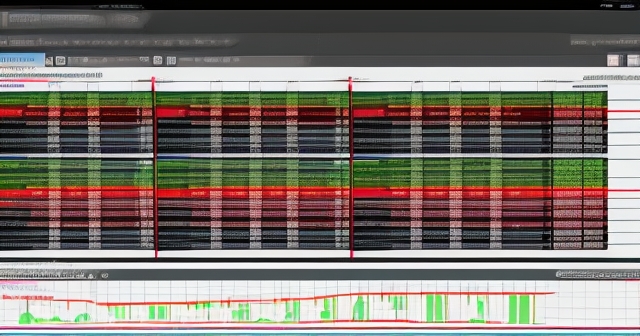
留言